Abstract
Ten horses (Equus caballus) were vaccinated with strain TC-83 Venezuelan equine encephalomyelitis (VEE) virus vaccine. Febrile responses and leukopenia due to a reduction of lymphocytes and neutrophils were observed in all animals. Viremias were demonstrable in eight horses, with a maximum of 103.5 median tissue culture infectious dose units per ml of serum in two horses. Clinical illness with depression and anorexia were observed in five horses. Neutralizing (N), hemagglutination-inhibiting, and complement-fixing antibodies to the vaccine virus were demonstrable by 5, 6.5, and 7 days, respectively, after vaccination. Differential titrations of serum to six VEE strains revealed high titers of N antibody to vaccine virus, moderate titers to the epizootic Trinidad donkey no. 1 strain (VEE antigenic subtype I, variant A) from which TC-83 was derived, and low titers to two other epizootic strains (subtype I, variants B and C) in all horses at 1 month after vaccination; some animals responded with low levels of N antibody to the enzootic viruses (subtype I, variants D and E). Fourteen months after vaccination, six animals with detectable N antibody were challenged with MF-8 (subtype I, variant B), an epidemic-epizootic strain isolated in 1969 from a man in Honduras. All horses resisted challenge with the equine pathogenic strain of VEE. Marked increases of N antibody in most horses were demonstrable to some VEE strains when tested 1 month after challenge.
Full text
PDF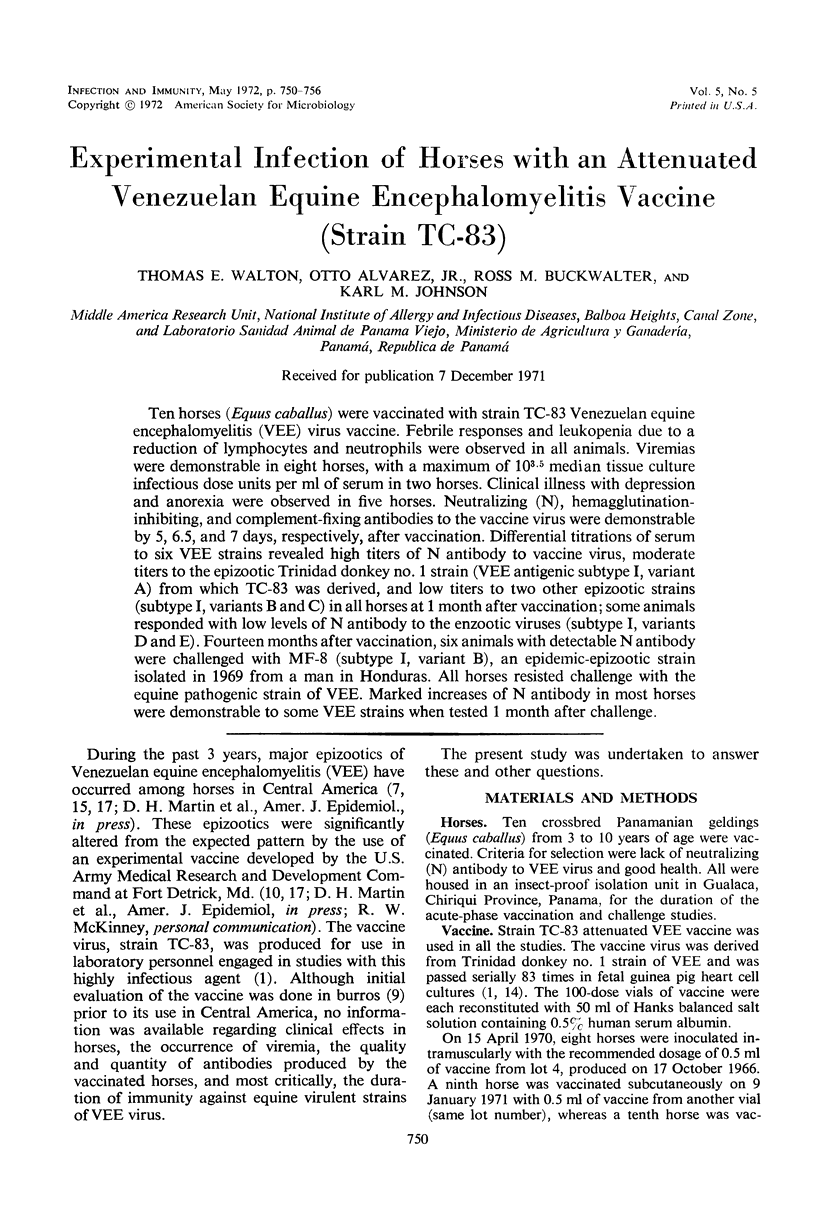
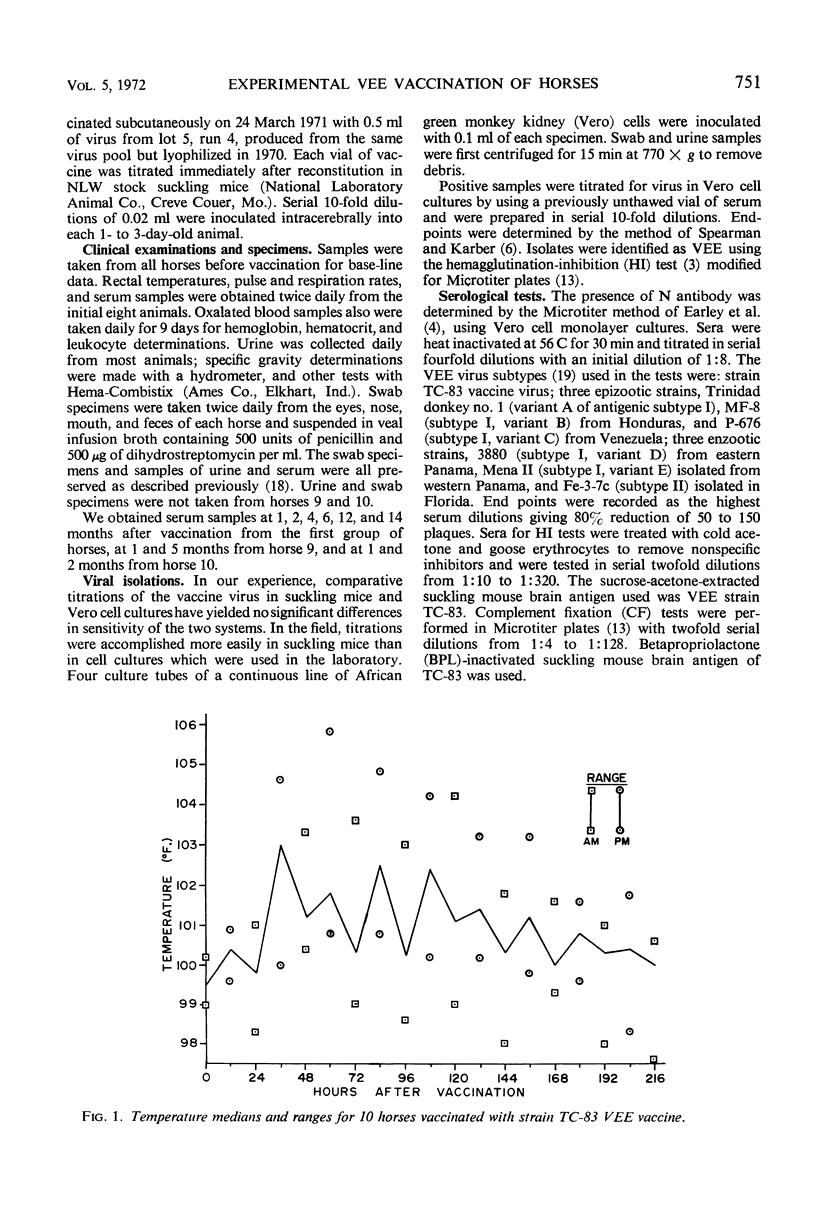
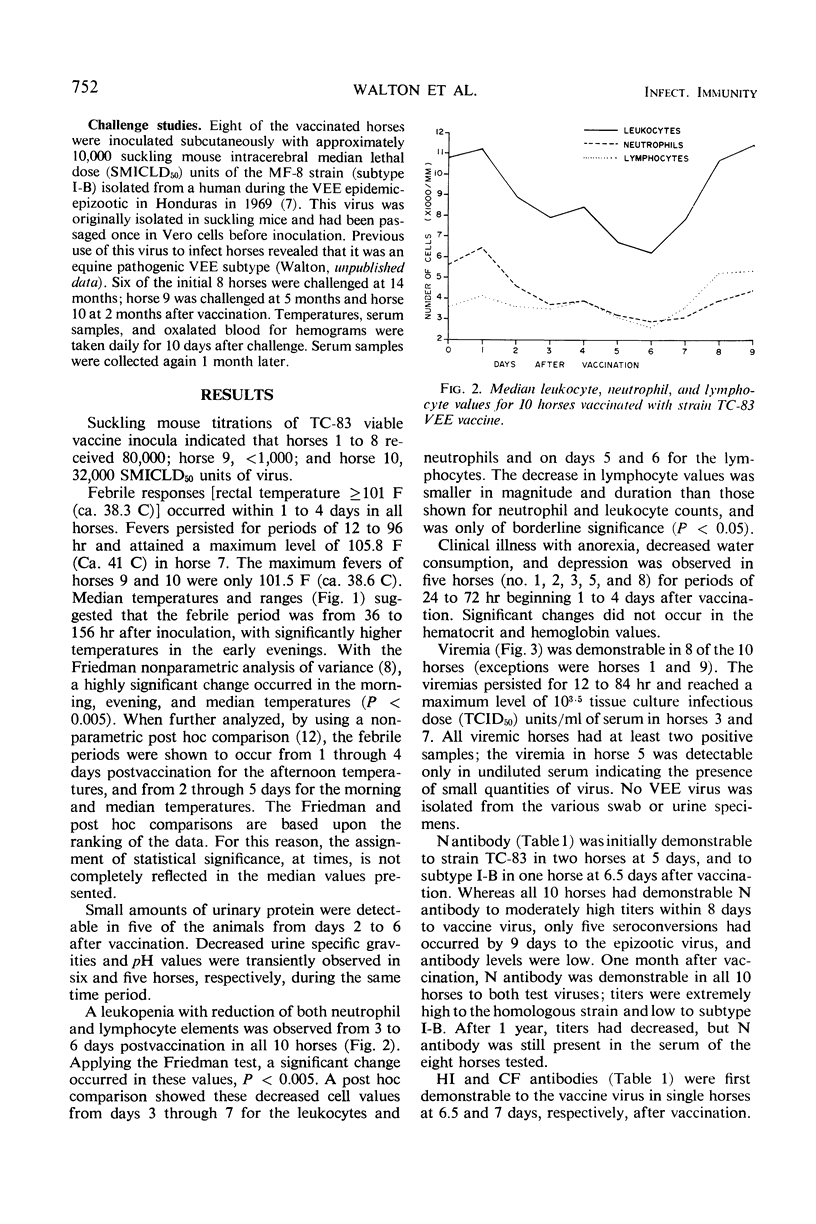
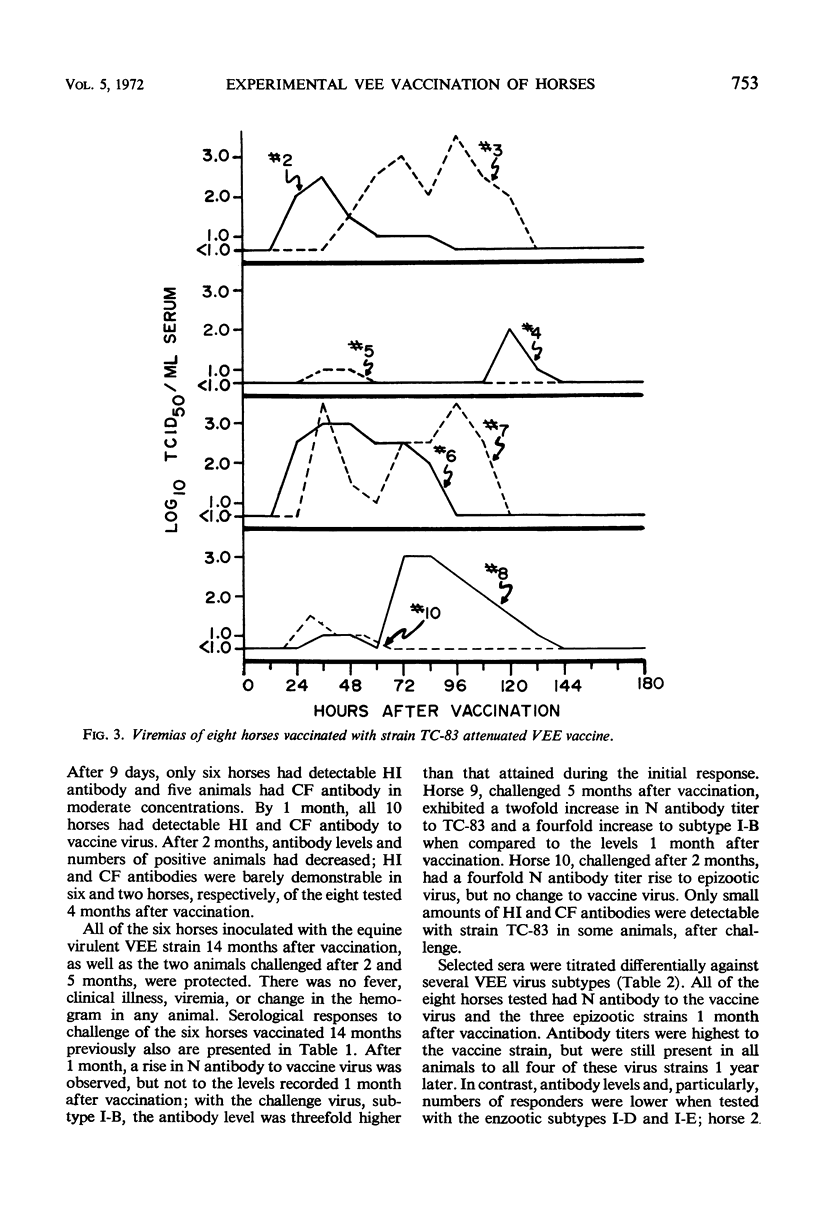
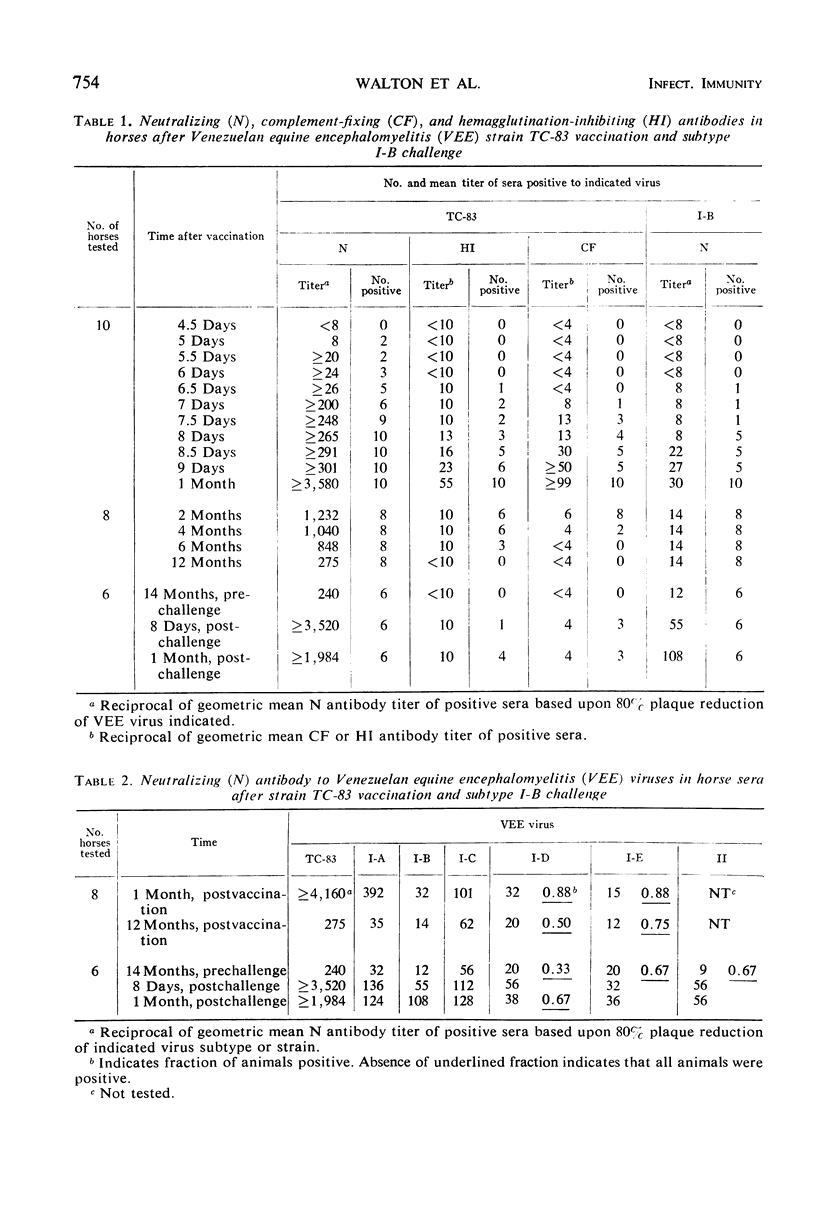
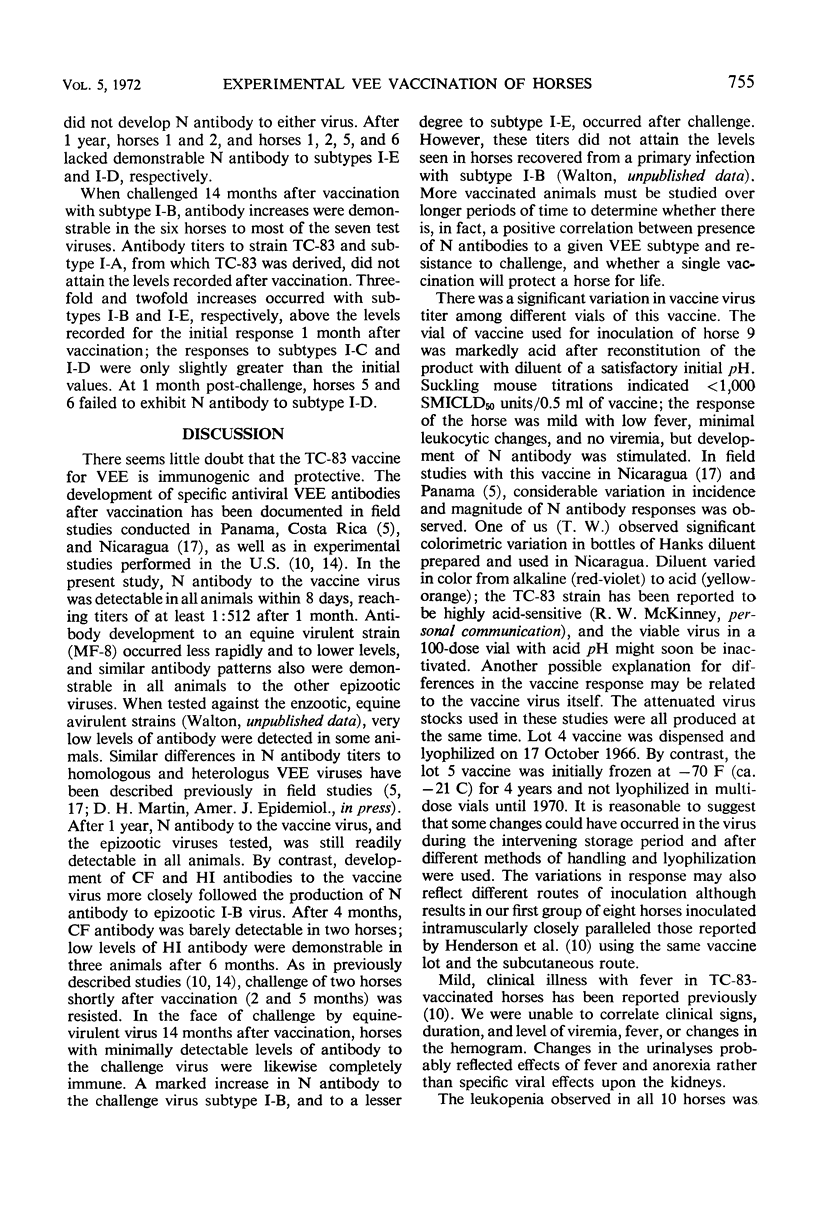
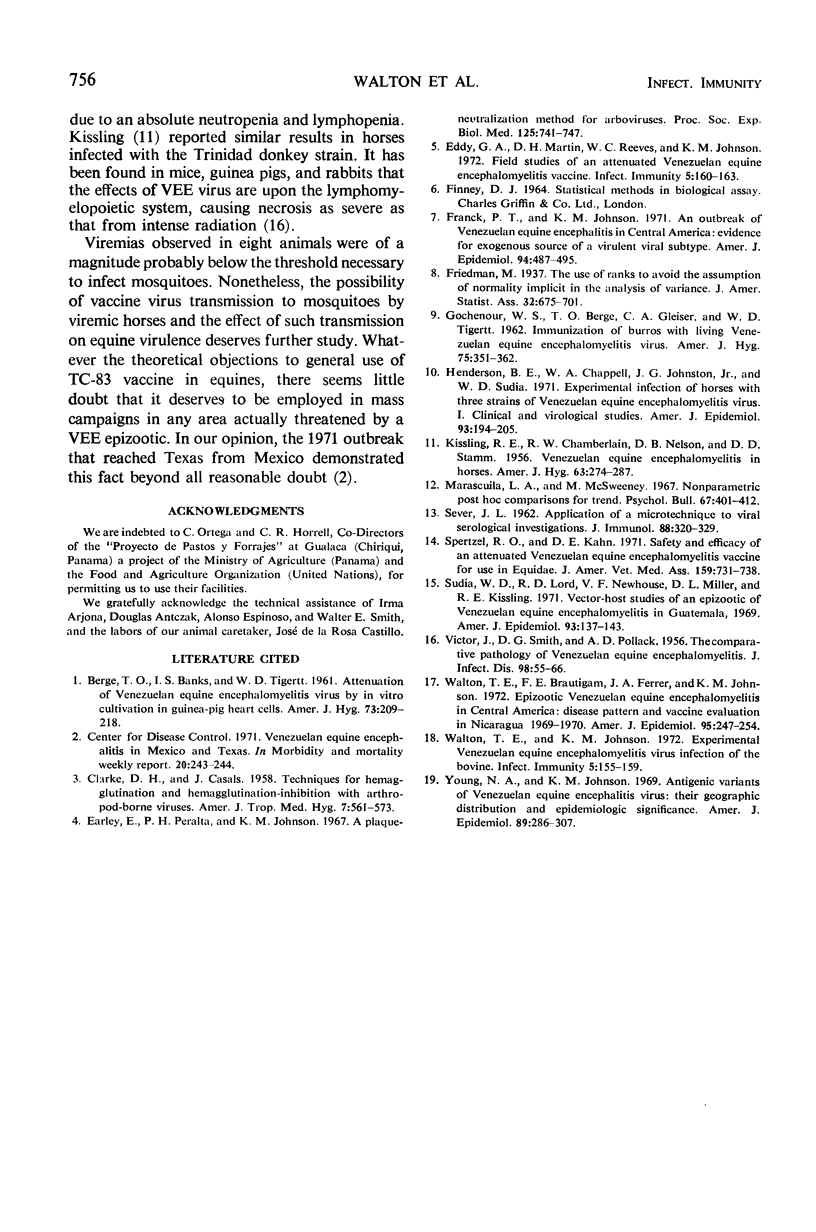
Selected References
These references are in PubMed. This may not be the complete list of references from this article.
- CLARKE D. H., CASALS J. Techniques for hemagglutination and hemagglutination-inhibition with arthropod-borne viruses. Am J Trop Med Hyg. 1958 Sep;7(5):561–573. doi: 10.4269/ajtmh.1958.7.561. [DOI] [PubMed] [Google Scholar]
- Earley E., Peralta P. H., Johnson K. M. A plaque neutralization method for arboviruses. Proc Soc Exp Biol Med. 1967 Jul;125(3):741–747. doi: 10.3181/00379727-125-32194. [DOI] [PubMed] [Google Scholar]
- Eddy G. A., Martin D. H., Reeves W. C., Johnson K. M. Field studies of an attenuated Venezuelan equine encephalomyelitis vaccine (strain TC-83). Infect Immun. 1972 Feb;5(2):160–163. doi: 10.1128/iai.5.2.160-163.1972. [DOI] [PMC free article] [PubMed] [Google Scholar]
- Franck P. T., Johnson K. M. An outbreak of Venezuelan equine encephalomeylitis in Central America. Evidence for exogenous source of a virulent virus subtype. Am J Epidemiol. 1971 Nov;94(5):487–495. doi: 10.1093/oxfordjournals.aje.a121346. [DOI] [PubMed] [Google Scholar]
- GOCHENOUR W. S., Jr, BERGE T. O., GLEISER C. A., TIGERTT W. D. Immunization of burros with living Venezuelan equine encephalomyelitis virus. Am J Hyg. 1962 May;75:351–362. doi: 10.1093/oxfordjournals.aje.a120257. [DOI] [PubMed] [Google Scholar]
- Henderson B. E., Chappell W. A., Johnston J. G., Jr, Sudia W. D. Experimental infection of horses with three strains of Venezuelan equine encephalomyelitis virus. I. Clinical and virological studies. Am J Epidemiol. 1971 Mar;93(3):194–205. doi: 10.1093/oxfordjournals.aje.a121246. [DOI] [PubMed] [Google Scholar]
- KISSLING R. E., CHAMBERLAIN R. W., NELSON D. B., STAMM D. D. Venezuelan equine encephalomyelitis in horses. Am J Hyg. 1956 May;63(3):274–287. doi: 10.1093/oxfordjournals.aje.a119811. [DOI] [PubMed] [Google Scholar]
- Marascuilo L. A., McSweeney M. Nonparametric post hoc comparisons for trend. Psychol Bull. 1967 Jun;67(6):401–412. doi: 10.1037/h0020421. [DOI] [PubMed] [Google Scholar]
- SEVER J. L. Application of a microtechnique to viral serological investigations. J Immunol. 1962 Mar;88:320–329. [PubMed] [Google Scholar]
- Spertzel R. O., Kahn D. E. Safety and efficacy of an attenuated Venezuelan equine encephalomyelitis vaccine for use in Equidae. J Am Vet Med Assoc. 1971 Sep 15;159(6):731–738. [PubMed] [Google Scholar]
- Sudia W. D., Lord R. D., Newhouse V. F., Miller D. L., Kissling R. E. Vector-host studies of an epizootic of Venezuelan equine encephalomyelitis in Guatemala, 1969. Am J Epidemiol. 1971 Feb;93(2):137–143. doi: 10.1093/oxfordjournals.aje.a121234. [DOI] [PubMed] [Google Scholar]
- VICTOR J., SMITH D. G., POLLACK A. D. The comparative pathology of Venezuelan equine encephalomyelitis. J Infect Dis. 1956 Jan-Feb;98(1):55–66. doi: 10.1093/infdis/98.1.55. [DOI] [PubMed] [Google Scholar]
- Walton T. E., Brautigam F. E., Ferrer J. A., Johnson K. M. Epizootic Venezuelan equine encephalomyelitis in Central America. Disease pattern and vaccine evaluation in Nicaragua, 1969-1970. Am J Epidemiol. 1972 Mar;95(3):247–254. doi: 10.1093/oxfordjournals.aje.a121392. [DOI] [PubMed] [Google Scholar]
- Walton T. E., Johnson K. M. Experimental Venezuelan equine encephalomyelitis virus infection of the bovine. Infect Immun. 1972 Feb;5(2):155–159. doi: 10.1128/iai.5.2.155-159.1972. [DOI] [PMC free article] [PubMed] [Google Scholar]
- Young N. A., Johnson K. M. Antigenic variants of Venezuelan equine encephalitis virus: their geographic distribution and epidemiologic significance. Am J Epidemiol. 1969 Mar;89(3):286–307. doi: 10.1093/oxfordjournals.aje.a120942. [DOI] [PubMed] [Google Scholar]


